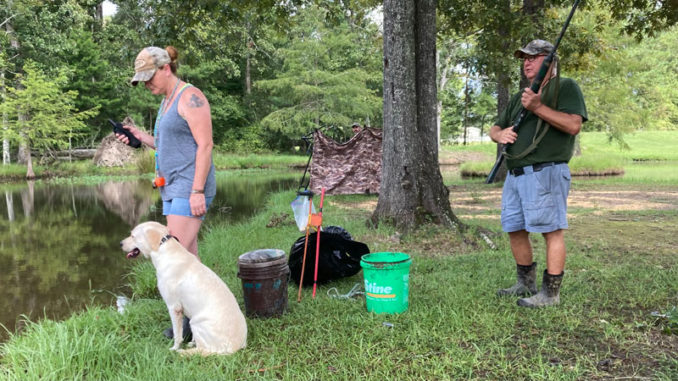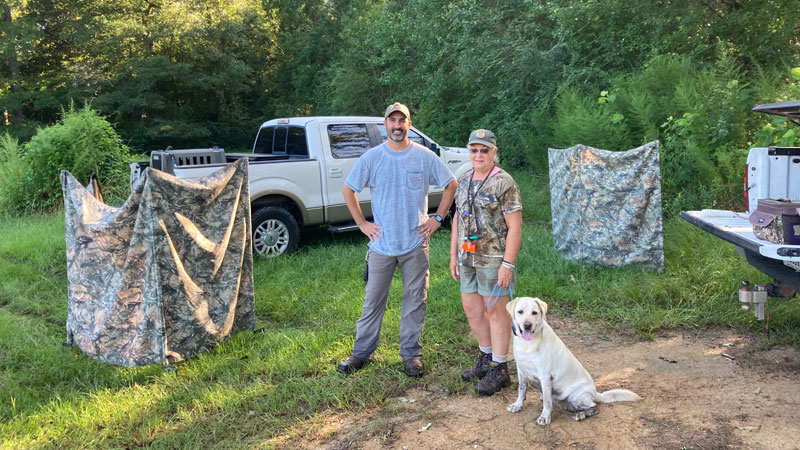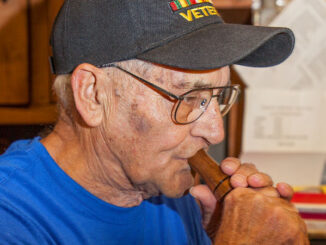
One of the great things about waterfowl hunting is that it’s a social pursuit.
A big part of the appeal is that it is not so much of a solitary pursuit like deer hunting where the hunter is mostly solo. We live for those hunts where things line up just right. The ducks work in like they were on a string and when “Get ‘Em” is called, the blind is rewarded with the splash of ducks hitting the drink. Though that is the stuff we all dream about, a retriever that has not been trained and prepared to do the job can turn it into a nightmare pretty quick.
The point is that a retriever needs to be rock steady and only goes on command despite all the excitement of calling, gunfire, splashed birds and the enthusiasm of the hunters high fives and such.
First off, an unruly dog that breaks puts itself and the hunters in danger. Second, they can flare birds before they are within range by moving around. Third, a dog that breaks on a bird will miss the other birds that were downed on that flight. This leads to having to direct the dog to the birds it didn’t see which burns time and may cause other interested ducks in the area to flare from the spread.
Marks and blinds
There will be times when the dog did not see the bird even when steady (obstructed view) and it will have to be handled to it via voice, whistle and hand signals. This is called a blind retrieve which we will cover in the next column. For reference, a “mark” is a bird the dog sees, a “blind” is one it did not.
Teaching steadiness from the beginning is the way to avoid these issues and it is non-negotiable. The dog only goes when told. “Breaking,” as the term is known, is also a lot harder to correct if a dog has been able to get away with it before in the past.
Teaching the concept is fairly easy, it just takes repetition. Your dog should already know “sit” by voice and hopefully by whistle, which is one sharp blast with the dog at heel or out away from you. “Stay” comes into the mix after they have “sit” mastered. Some trainers and handlers combine both commands with “sit,” meaning “stay,” until directed to move. I started out using both so that’s what I stick with. When the dog has a firm grasp, move to having the dog at heel while you are sitting on a shell bucket or swivel chair to start. It’ll be easier to control the dog when down at its level. From there, you can move to working from a standing position.
Practice with patience

With the dog at heel, have a helper throw a bumper. A young dog is going to be excited, so having them on a short leash or holding onto the collar ensures the dog can’t break. After the “mark” hits the ground or water, wait for the dog to calm down before sending it. Releasing the dog while it’s wound up teaches it that its okay to be overly excited and it will still get the retrieve. You want eager, but also calm.
Start with singles until the dog is steady then move to doubles with a 3-5 second gap between when the bumpers or dummies are thrown. The delay is to give the dog enough time to see where the bumper fell and “mark” it before focusing on the next bird. Now is a good time to use a gun, broomstick or whatever you have handy to teach the dog to follow the gun. They’ll learn that the gun points out where the bird is coming from and key on it. Follow the thrown mark with the gun just as if it were a real bird all the way to the deck so your dog follows it. Keep the distances and cover short to start off, then work in a third mark along with adding cover and distance. Blanks, poppers or even a starter pistol being shot adds realism to the whole process and helps keep the dreaded gun shyness at bay.
Teaching steadiness and marks is work, so joining a retriever club or forming a training group with some friends ensures the dog gets enough repetition, especially with longer distances. They figure out quickly that you can only throw a dummy so far and will start to stop at that distance. As I’ve mentioned before, I’ve learned this through experience.
A great dog will get its owner invited on more hunts than they can possibly go on, so keep that in mind with all of this as an incentive to keep working. From then on, it’ll be good times!
